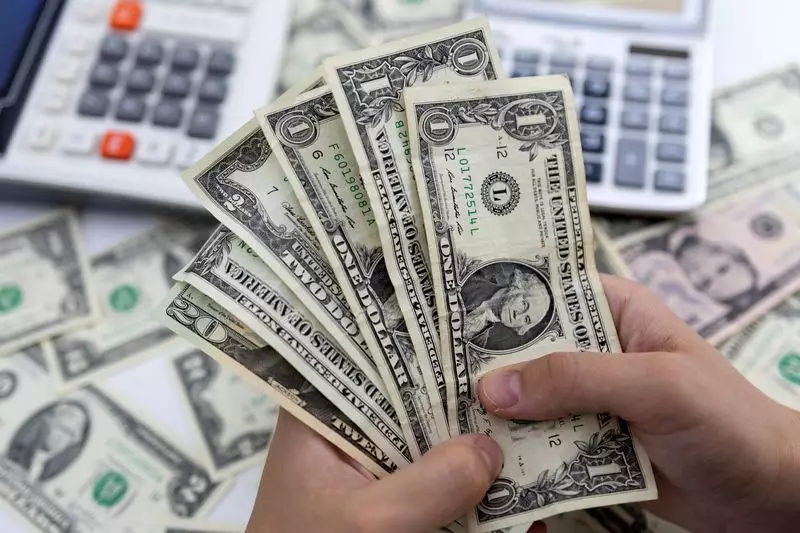In the ever-changing landscape of global finance, currency valuation is intrinsically linked to economic policies, particularly those emerging from the highest echelons of power. On a recent Wednesday, the U.S. dollar fell to a two-week low amid uncertainties surrounding President Donald Trump’s tariff intentions. As the financial markets maneuvered around the ambiguity of these trade negotiations, traders found themselves grappling with the impact of tariff announcements and policy decisions. This article dissects the relationship between Trump’s proposed tariffs and the fluctuating fortunes of the dollar against its major competitors.
President Trump recently suggested imposing a 10% tariff on Chinese imports set to commence on February 1, while maintaining the prospect of a 25% levy on goods from Mexico and Canada. However, the lack of concrete implementation strategies leaves markets in a state of flux. It’s a classic case of materializing uncertainty, where projections of economic stability fall prey to political maneuverings. Despite the administration’s attempts to delineate a calculated approach to new tariffs, the dollar’s initial response was a notable decline, impacting its value against a basket of major currencies by approximately 1.2%.
The dollar index, which is a measure that tracks the U.S. currency against six of its primary rivals, slipped further as comments from Trump triggered market speculation. On this particular day, it reached a low of 107.75, creating ripples in the currency markets that reflected broader anxieties over how these trade policies may unfold.
While Trump’s presidency has begun to prioritize tariffs as a central part of its economic approach, market analysts remain divided on the implications of these strategies. Jim Reid from Deutsche Bank emphasized the lingering uncertainties, suggesting that the administrative talk may not justify the immediate market reactions. Traders are left contemplating both the direct and collateral effects of such policies, amid muted demand signals beyond Trump’s initial oversimplified promises.
Compounding these tensions are observations that while Trump may be inclined to pursue tariffs as a means to bolster economic growth, experts are wary of potential inflationary pressures that accompany such policies. Interestingly, there are emerging thoughts that a more moderated tariff approach could mitigate inflation risks, providing a glimmer of hope during this precarious phase for the dollar.
In a volatile global market, the euro and pound also demonstrated sensitivity to these shifting scenarios, with the euro experiencing some short-lived inertia before stabilizing in value. Analysts noted its rise to $1.0457, reflecting a cautious optimism tied to the hopes of lower inflation stemming from tempered trade policies. Meanwhile, the British pound experienced fluctuations but eventually receded slightly after reaching a two-week peak against the dollar.
Elsewhere, Canada’s currency faced similar challenges as it succumbed to pressures from recent inflation data, illustrating how interconnected these economies have become. The Mexican peso made gains as it opened at 20.547 per dollar, hinting at broader regional market trends influenced by U.S. socio-economic approaches.
Current speculation surrounding Federal Reserve decisions hangs heavily over market actors, with predictions of a quarter-point interest rate cut by mid-2023 starting to circulate. These potential rate adjustments could either alleviate or exacerbate prevailing currency pressures, depending on how they coincide with upcoming economic data releases. Investors are now confronted with the duality of waiting for actions on tariffs while simultaneously monitoring the Fed’s next moves.
As trade wars loom large over the financial landscape, the dollar’s path forward remains fraught with uncertainty. Each statement from the administration regarding tariffs reverberates through the markets, affecting not only the dollar but also how other currencies respond in turn. With central banks keeping a watchful eye on inflation and growth forecasts amidst this uncertainty, the coming months will be crucial in determining the stability of the dollar and its role in the global economy. The market’s ability to absorb and adapt to these shifting policies will ultimately dictate the future trajectory of U.S. currency in the face of international competition.

